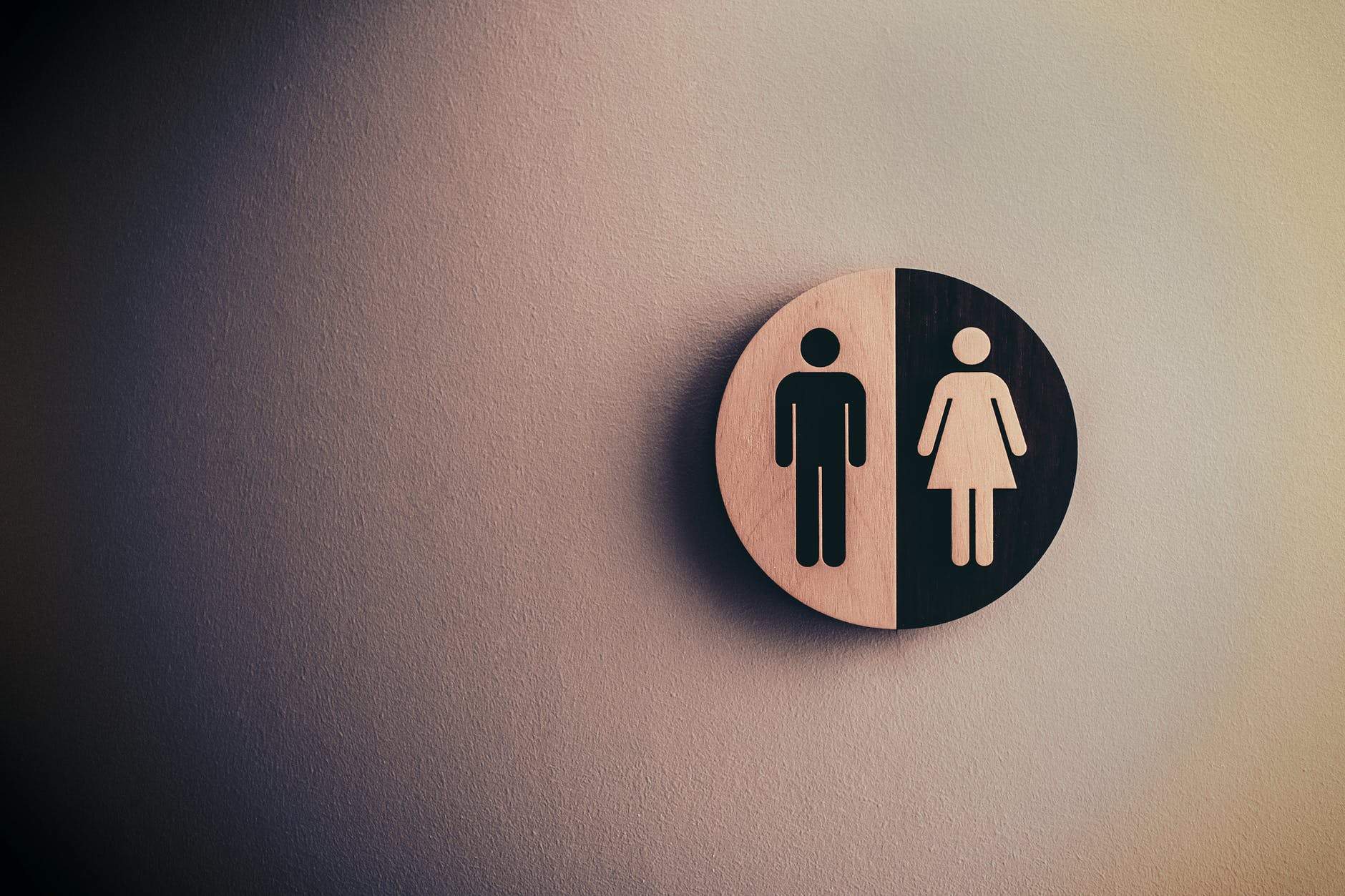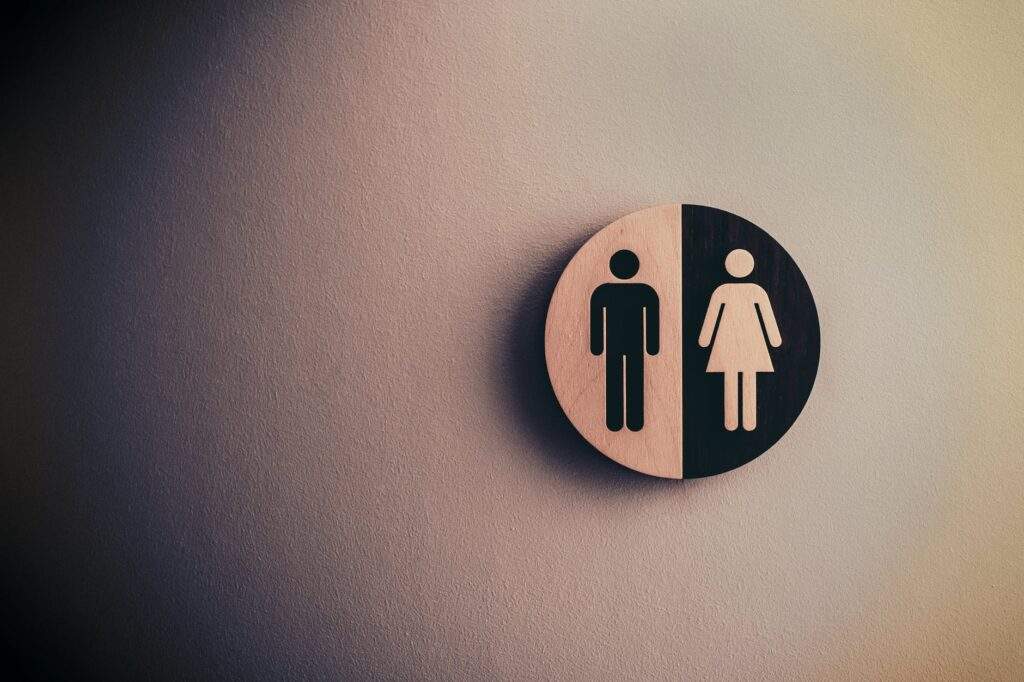

Public restrooms and toilets are rarely a topic of conversation. Some people use them regularly, others try to steer clear of them, whatever your stance on them, they are pretty convenient and very much needed. Unfortunately, it took a worldwide pandemic for us to broach the topic of hygiene, public restrooms, and their design.
During the past year, the topic of hygiene and the fear of using public restrooms during the pandemic of COVID-19 made headlines all over the world. Many public restrooms were closed and deemed too risky to use during a pandemic – suddenly everyone remembered their existence and the importance of hygiene in them.
Another thing that came to the light of the day is handwashing – how and when it’s done, are we doing it properly? All of a sudden, a virus, inspired us to think about shared public spaces such as restrooms and hygiene in them.
Today, in the response to the pandemic, the design of public restrooms is rapidly becoming something out of science-fiction movies. Manufacturers are striving to make products that require little to no touching of surfaces, motion sensors, automatic doors and so much more. Everything to make the public environments safer, cleaner, and germ-free.
Let’s see how restroom design in the time of COVID-19 looks like and if you can incorporate something in your own bathroom design.
1. Restroom layout
It’s interesting that in Europe, even before the outbreak of COVID-19, public restroom layouts were slowly becoming more gender-neutral. This type of layout has many benefits from public safety, to accommodation for people with special needs and more efficient space.
These gender-neutral restrooms turned up to be the best solution for restroom design in these COVID-19 times. The toilets are placed in individual stalls that have floor-to-ceiling partitions with no open spaces above or below in gender-neutral bathrooms. These types of stalls offer privacy and safety and are ideal for social distancing.
The sinks in gender-neutral restrooms are placed in the common area. The turn-around corner entryways are also being introduced as a way to minimize cross-traffic.
2. Improved ventilation
The improvement of ventilation systems in restrooms is yet another feature of the new design of commercial restrooms. Poorly ventilated spaces put you at higher risk of COVID-19. This is why experts recommend avoiding indoor spaces that offer no fresh air. Airborne contaminants are best diluted with outdoor air.
As a result, public restrooms are being equipped with robust HVAC systems that ventilate with outdoor air. If possible, natural ventilation should also be achieved through windows, louvers, and doors.
In addition to adequate ventilation systems, maintaining and regularly checking HVAC systems should be a priority. Regularly replacing filters, checking on exhaust fans, and, in that way, augmenting ventilation.
3. Touchless fixtures and other gadgets
Touchless fixtures have become increasingly popular in restroom design in the time of COVID-19. Touchless fixtures are any sort of plumbing fixtures that aren’t used manually.
The point of these touchless, no-touch, or hands-free fixtures is to limit the spread of germs and bacteria. People carry all kinds of germs on their hands that can be easily transmitted to faucets, toilet handles, soap dispensers, and so on. Those germs remain on those surfaces and are transferred to other visitors that touch the surface.
By installing touchless fixtures and other gadgets we can successfully avoid picking up any sort of germ and bacteria.
These hands-free fixtures include faucets and flushometers that have integrated motion sensors that detect when the user is near and automatically turn on and off the water.
In addition to plumbing fixtures, touchless soap and sanitizer dispensers, as well as hand dryers, are also being installed in public restrooms. While a hand dryer is not a new invention and it’s been around for a while, it too has become more modernized, sleeker, and easier and safer to use.
Automatic doors, self-cleaning toilets, and lights that switch on and off automatically, on the other hand, are new technologies that are slowly being installed in many public restrooms.
Touchless technology is no longer a thing of the future, it’s here and it’s very convenient especially in the times we live in. Manufacturers are developing other technologies such as voice command or IoT systems that will slowly replace motion sensors in the future.
All in all, having touchless fixtures, gadgets, and lighting in the restrooms is the main part of the new design.
4. Sink materials
It’s not just fixtures that can accumulate bacteria and germs. Public restroom sinks are perfect places for the accumulation and propagation of bacteria, mold, and other kinds of germs. To avoid and prevent something like this, the new restroom design incorporates sinks made of smooth, nonporous materials such as quartz.
Not only that but in multi-user restrooms, sinks are designed so that they allow more space between users. This kind of design is ideal for social distancing practices.
As of lately, washbasins are being designed to self-clean and with mechanisms that prevent the growth and accumulation of bacteria and germs in them between uses. Engineers, designers, manufacturers are looking for different ways to make sure that the safety and hygiene in public restrooms are top-notch.
5. Wet floors are in the past
It’s well known by now that bacteria and germs love moist places and areas as they can better grow on them. Unfortunately, public restrooms are notorious for their wet floors and sinks.
It’s inevitable for water to drip from wet hands, but to minimize the possibility of it ending up on the floor, the new design of the restrooms includes soap dispensers and hand dryers close to the sinks. This way users won’t need to move away from the sink with dripping hands and get the floor all wet.
Without wet floors, there are no bacteria and no risks of slips and falls. With this new design, public restrooms are much safer places.
6. Cleaning and disinfecting restrooms
How clean were public restrooms before the pandemic and what has changed now in the age of COVID-19? The cleanliness of public restrooms was always questionable before the outbreak of the pandemic. Today, however, a lot has changed as health safety has come to the front.
Let’s start first by saying that there is a big difference between cleaning and disinfecting. Cleaning implies removing germs and bacteria from the surfaces such as floors, countertops, washbasins, and so on. Cleaning is done with effective cleaning products that remove dirt and bacteria, germs, and similar things.
Disinfecting and sanitizing, on the other hand, is a process of killing germs, bacteria, mold, and so on. Both of these processes are important.
Cleaning is always done before disinfection because by cleaning you remove most of the germs and bacteria, then what remains of them on the surfaces are further killed during the disinfection process.
During COVID-19 these practices have been significantly increased and all of the surfaces in the public restrooms are thoroughly cleaned and disinfected, especially high contact surfaces such as toilet seats and bowls, countertops, baby changing surfaces, door handles, and latches.
7. Antimicrobial material and surfaces
In public restrooms, high contact surfaces are not just fixtures and countertops. Toilet partitions, doors, grab bars, and so on, are also considered as high contact surfaces. These surfaces require frequent cleaning and disinfecting, and as such, they need to be made of materials that can withstand strong disinfectants.
This is precisely why the new restroom design incorporates antimicrobial materials and finishes on most surfaces. These antimicrobial finishes and materials prevent the growth of bacteria and germs. Materials such as silver and copper are also effective against bacteria and certain viruses.
8. Green and energy-efficient design
It’s also important to mention that restroom design in the time of COVID-19 is green and energy-efficient.
We already mentioned the health benefits of touchless fixtures, it’s also good to mention that they are more ecological and energy-efficient as well. When the user is done washing their hands, the water flow stops automatically saving both water and energy.
Similarly, LED and motion sensor lighting in public restrooms is cost-effective and ideal for public spaces. It’s also easy to maintain and the bright light of LED bulbs gives the feeling of safety and security.
Public restrooms also have the opportunity to collaborate with providers of recycled brands of toilet paper. This is a great way to reduce the paper waste produced by public restrooms.
So, it’s safe to say that restroom design is not only becoming safer, more hygienic but green and energy-efficient, as well.
It seems like this pandemic came about to show us the importance of health and proper hygiene. As technologies continue to improve so does the safety and hygiene in commercial bathrooms, toilets, and restrooms.
More and more public restrooms are being upgraded and redesigned as people are slowly becoming aware of the importance and convenience of these new restroom design features.
Gender-neutral restrooms, touchless fixtures, and other gadgets, self-cleaning toilets, and washbasins – all these features are not only safe and hygienic but are also convenient, cost-effective, and environmentally friendly.
Restroom infection control is still very strict and it’s still important to respect the measures in public restrooms, but even when everything easies down, with this design, restrooms will remain safe and hygienic places.